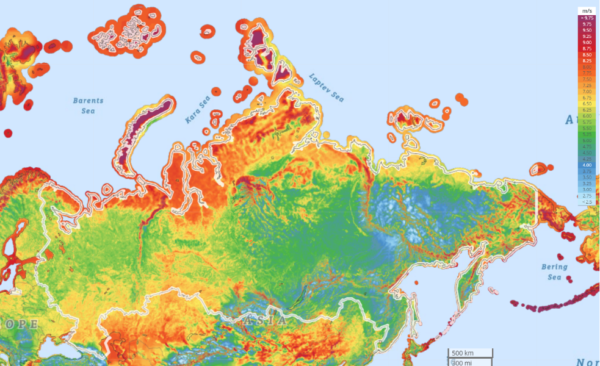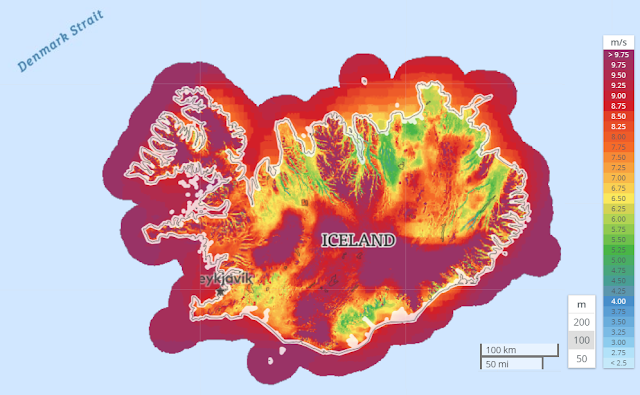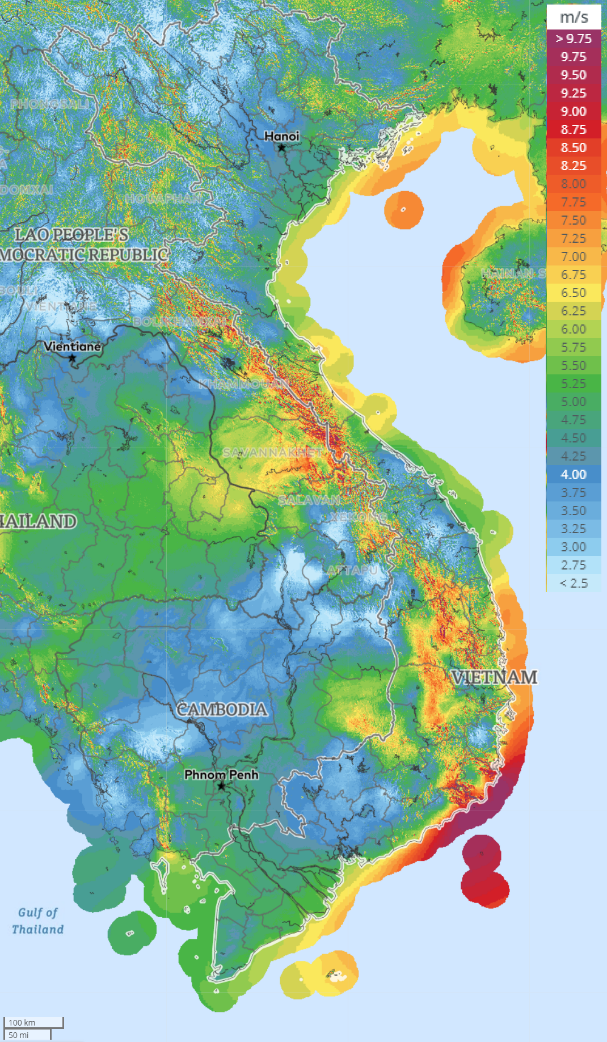
There is a lot of information available about the countries that have the highest installed capacity with wind power and how these countries increase their capacity every year. Think of countries like China, the United States, Germany, India or Spain. Information on countries with installed wind turbines capacity is available to the public, is very numerous and is not really necessary to mention. What is much more interesting is to discover which countries have high wind energy potential but little or no installed wind farm capacity. Shouldn’t these countries be the next places where the energy industry focuses its attention on the development of wind farm projects?
Russia has the largest global wind potential untapped. Putin doesn’t take it seriously and unfortunately he doesn’t know anything about the matter.
Here we analyze six countries that could be very suitable for wind energy, especially in terms of wind speed and wind energy density. This is not a list of countries, but rather a selection of countries that future wind energy investors and promoters could overlook. Most of the information on wind speed and wind energy density was collected using the Global Wind Atlas (GWA). The most recent version of this atlas was recently made available by the World Bank together with the Technical University of Denmark (DTU). This is an impressive wind atlas based on the 1km scale wind climate and GIS data. The free web-based GIS atlas was launched in November at the Wind Europe Conference in Amsterdam, the Netherlands.
Russia
With its 17 million square kilometers of surface and its 38,000 kilometers long coastline, Russia has the highest wind energy potential in terms of TWh / year on this list and one of the highest in the world. Despite its size and potential for wind resources, the country only has an estimated installed wind power capacity of 11 to 16 MW. Being the largest country on Earth, Russia’s technically feasible wind power potential is estimated at 6 TWh / year. However, it has a gross theoretical resource of wind energy of 80,000 TWh / year. The wind power density of the country is estimated at 721 W / m2 with an average wind speed of 8.4 m / s at 100 m in the windiest areas of 10%.
Large investments are required to take advantage of Russia’s wind resources with several auctions and licenses in the GW range prepared by the federal government. Recently, Dutch Lagerwey and OTEK (RosAtom) have also signed agreements to license Dutch wind turbines to OTEK.
Oman
Oman could be one of the most interesting options since it has an estimated wind energy density of 684 W / m2 and an average wind speed of 8.3 m / s at a height of 100 m in the windiest areas of the 10 %. This is quite comparable to the rich wind resources of several countries in northern Europe. By way of comparison, the Netherlands has a power density of 518 W / m2 and a wind speed of 7.7 m / s in the windiest areas of 10% at 100 m.

The wind resources in Oman are remarkably exceptional in the southern governorate of Dhofar (its capital, Salalah) and also in the governorship of Al Wusta. There is only one wind farm installed by GE and TSK of Spain.
Somalia
Somalia is very close to Oman. Both countries are located in the Arabian Sea in the northwestern region of the Indian Ocean. This is where the movement of the intertropical convergence zone (ITCZ) causes strong changes in the wind direction and produces wonderful conditions for high wind speeds.
Somalia is generally not associated with wind power or any form of renewable energy for that matter. The country is usually in the news because of its problems due to civil wars, piracy and economic instability. However, few people know that Somalia has one of the highest combined wind power and solar energy potentials on the planet. The city of Garowe in Punland has been fed since 2016 by a 3.5 MW hybrid wind and solar power plant that recently increased to 5.9 MW to provide its 50,000 inhabitants with more than 90% of its electricity demands. Somalia’s power density is estimated at 849 W / m2 and 9.0 m / s at 100 m for areas with 10% wind. This is not far from the estimated UK average of 928 W / m2 and 9.4 m / s.
Iceland
Iceland’s electricity supply is 100% renewable energy, thanks to geothermal and hydraulic. Therefore, the country does not need to use the wind to supply its demand. This is ironic since Iceland’s wind speed is estimated at 11 m / s at 100 m in the windiest areas of 10% with a corresponding power density of 1,942 W / m2.

The four wind turbines built with their installed capacity of 3 MW in Iceland mainly serve to test wind turbines in extreme conditions. However, Iceland could consider wind power for the electricity trade if a future submarine interconnector connects the country with the United Kingdom. Another reason to consider wind power would be a future increase in the levelized energy cost (LCOE) for the supply of geothermal and hydroelectric power.
Kazakhstan
Kazakhstan is looking to increase investments in renewable energy in part because of its constantly growing economy. The greatest potential for wind energy is in the Caspian Sea region, including other areas in the central and northern parts of the country.

The vast open landscape of steppe gives Kazakhstan some exceptional areas to exploit wind energy. The country has an estimated average wind speed of 8.0 m / s at 100 meters and a power density of 583 W / m2 in areas with 10% wind. Wind power developments are underway with Vestas recently securing an order for wind turbines with CAPEC Green Energy and China Goldwind.
Vietnam
Vietnam has the highest installed wind farm capacity on this list, estimated at 140-180 MW. The country deserves to be mentioned due to its 3,200 km coastline with excellent conditions for offshore wind power and onshore.

According to the Global Wind Atlas, Vietnam’s average wind speed at 100 m is estimated at 7.8 m / s with a power density of 615 W / m2 for areas with more wind of 10%. The current installed wind power capacity is still less than 0.4% of Vietnam’s electricity generation. This is one of the reasons why developments are being carried out to exploit the country’s estimated wind power technical potential of 24-28 GW.
Vietnam’s strong economic growth has been a key factor behind the recent increase in renewable energy projects. This development is attracting the formation of large wind energy alliances and is slowly leading the country towards its goal of becoming a regional clean energy leader.
Other critical points of wind resources
All the countries mentioned in our list have an installed wind power capacity of less than 200 MW. However, recent developments indicate that some of these countries will witness a substantial increase in wind power capacity. Countries around the world are looking for opportunities to join forces with international developers, manufacturers and investors to make the transition to renewable energy as smooth as possible.
Several other countries with unexplored but high potential wind resources were not mentioned, but could have deserved a place on our list. Countries like Chad, Mongolia and Venezuela are some notable mentions. Some countries have specific parts that are exceptionally windy such as western Afghanistan, eastern Azerbaijan or northern Kenya or Colombia. There are also regions that form critical zones of wind resources such as the Caspian Sea, the Arabian Sea, parts of Central America or the northern latitude zones.
Obviously, there are many other factors that are important for wind energy projects worldwide, in addition to wind speed and power density. The information was obtained from Global Wind Atlas 2.0, a free web-based application developed, owned and operated by the Technical University of Denmark (DTU) in partnership with the World Bank Group, using data provided by Vortex, with funds provided by Energy Sector Management Assistance Program (ESMAP).